Brest Lyfe
Jane Freiman
Like many, I found myself in Brest by accident. I had been somewhat randomly placed there to teach English in an elementary and a middle school in two tiny nearby towns. In the months preceding my move, I googled images of the region and fielded an array of boob jokes. I found cranes, concrete, naval ships, stone. Further out from the city, more stone, cold coasts, cliffs, cows, beautiful landscapes, statues of somber women. In response to the austere unknown, I developed delusions like, “I’m going to learn to surf.” I anxiously read weather reports that all announced rain. I tried to scrap together some expectation of a place I wasn’t yet sold on.
Brest is situated along the coast of the western tip of both the Brittany region and France. Home to one of France’s largest naval bases, it could be described as one of the country’s smaller big cities; as of 2019, it was the 25th largest in the country, with a population of about 140,000 inhabitants. Architecturally, Brest possesses little of the Haussmanian charm (stone facades, pitched roof, wrought iron balconies) that one might expect from a city in France. The city was almost entirely bombed out—mostly by Americans, I was often reminded—during German occupation in the 1940s. Afterwards, it was quickly rebuilt in various shades and textures of concrete.
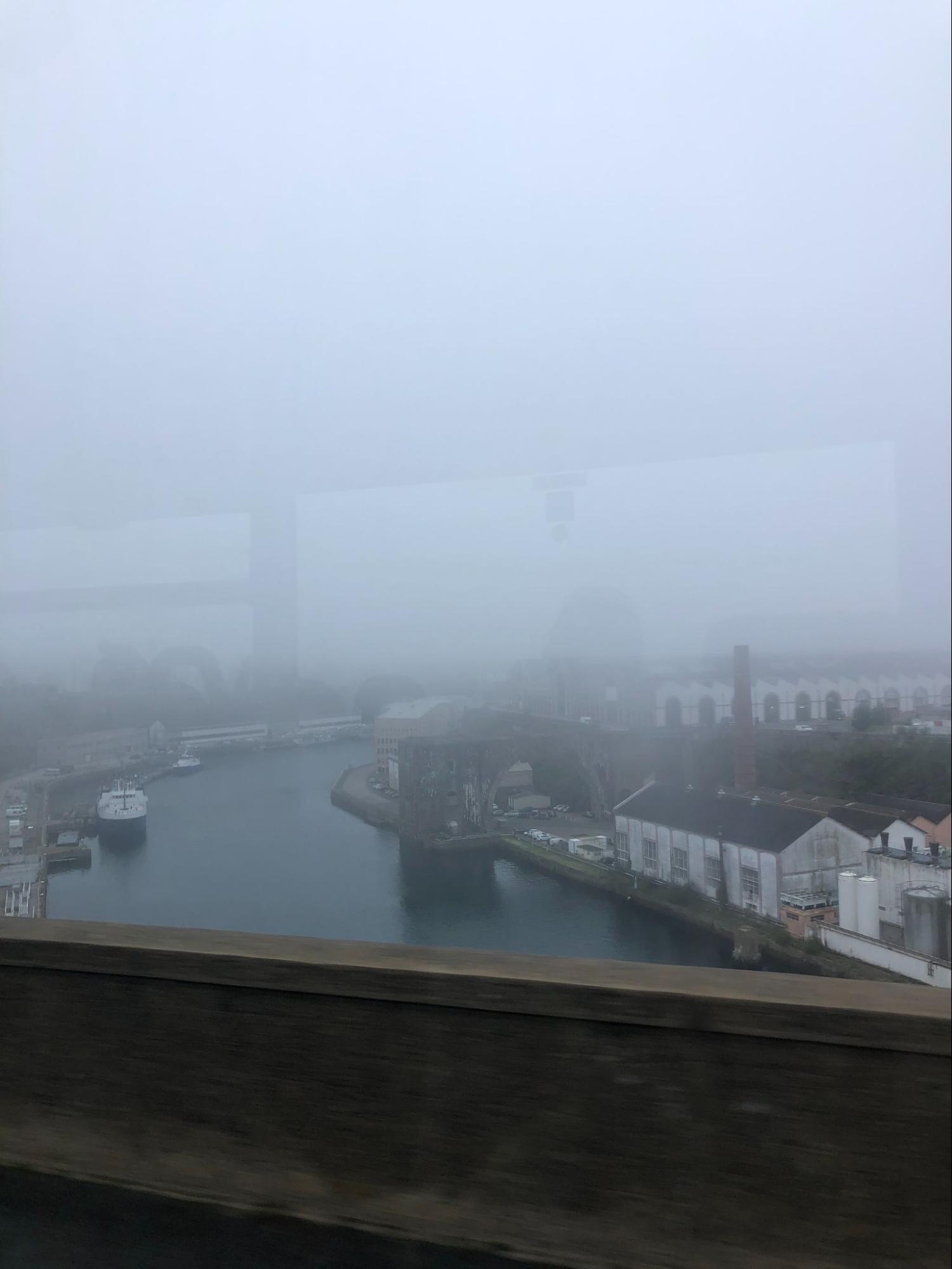 Brest military arsenal, 2022. Photo by Jane Freiman.
Brest military arsenal, 2022. Photo by Jane Freiman.

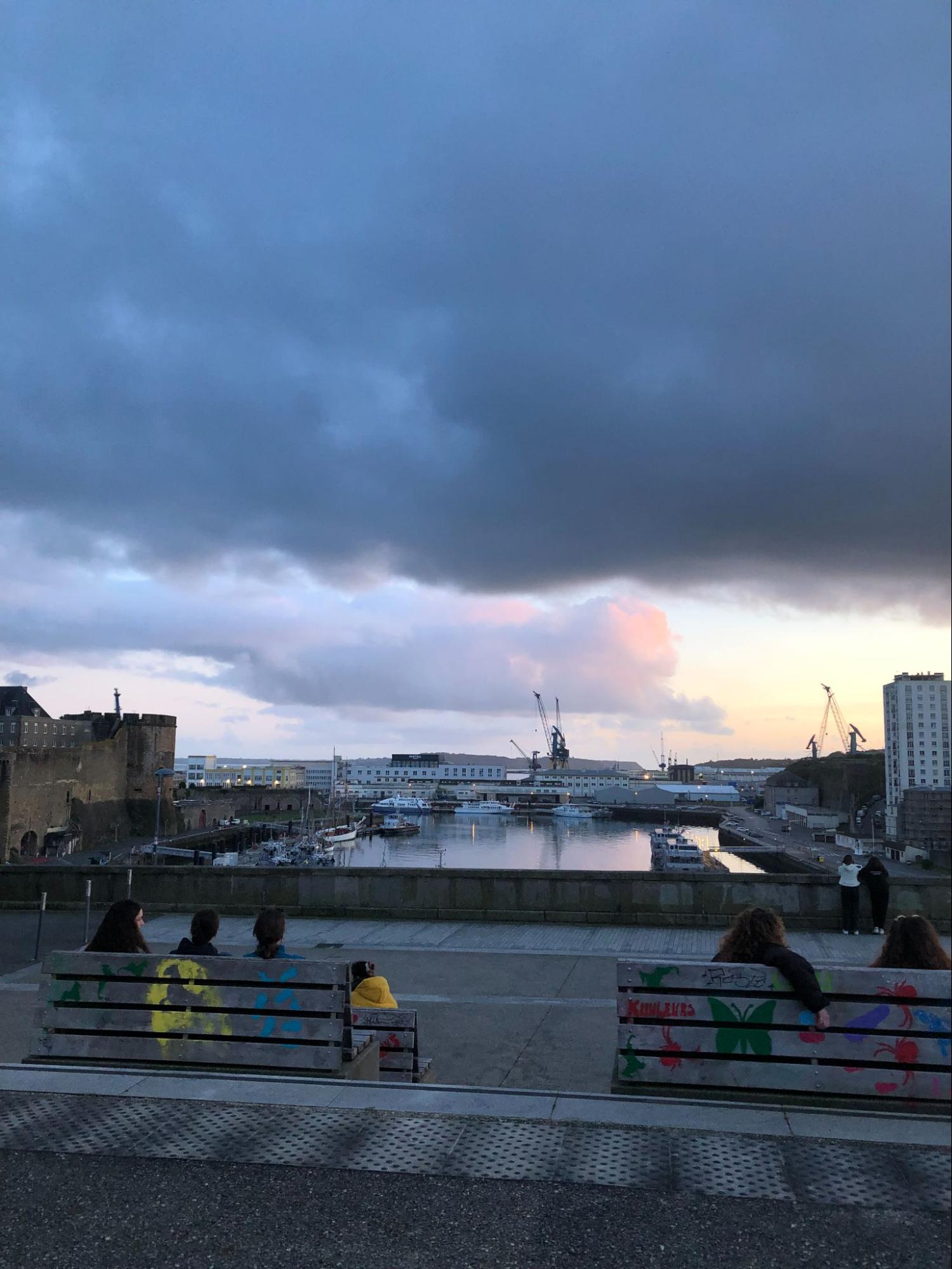
Port of Brest, 2023. Photos by Jane Freiman.
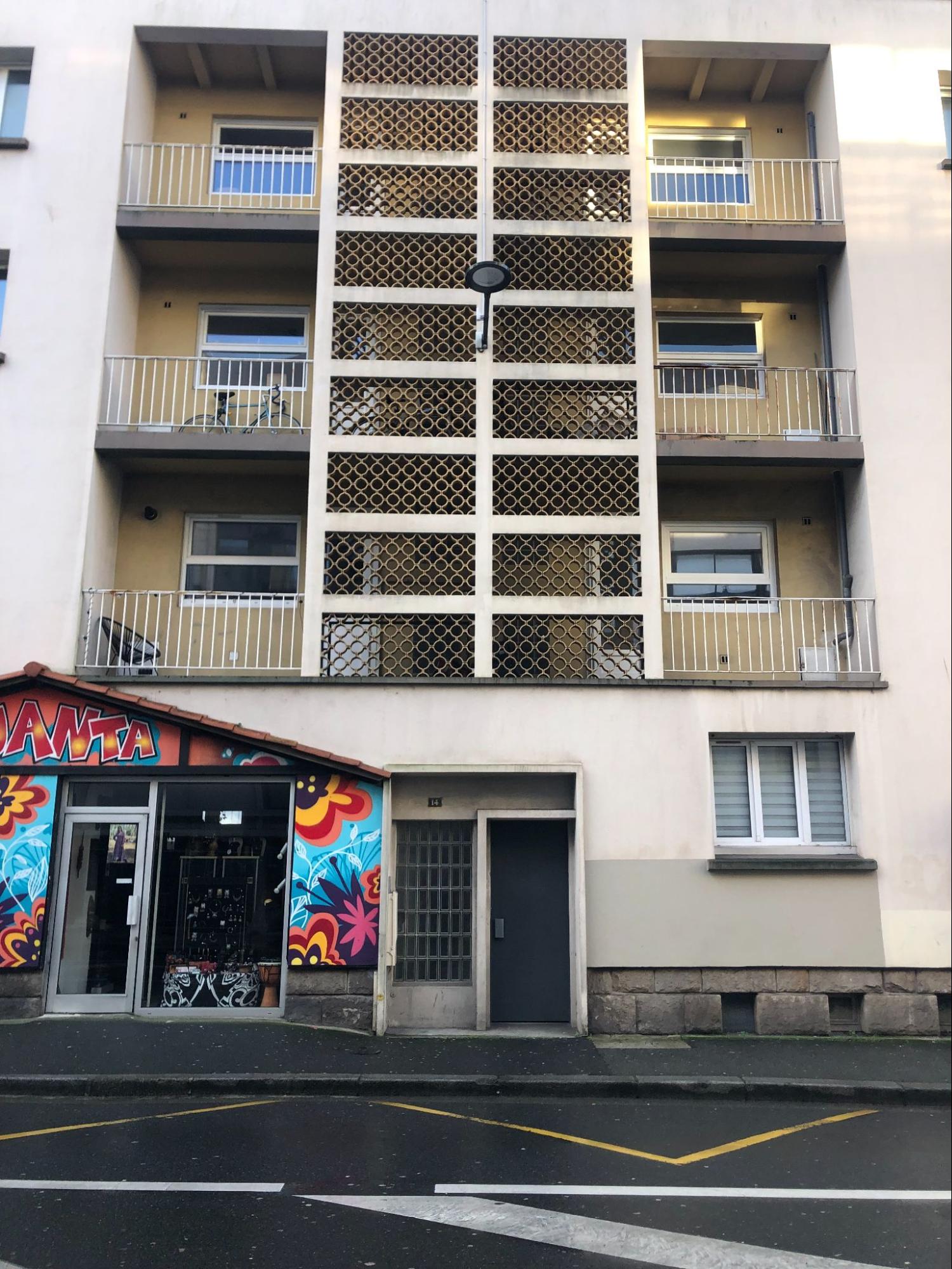
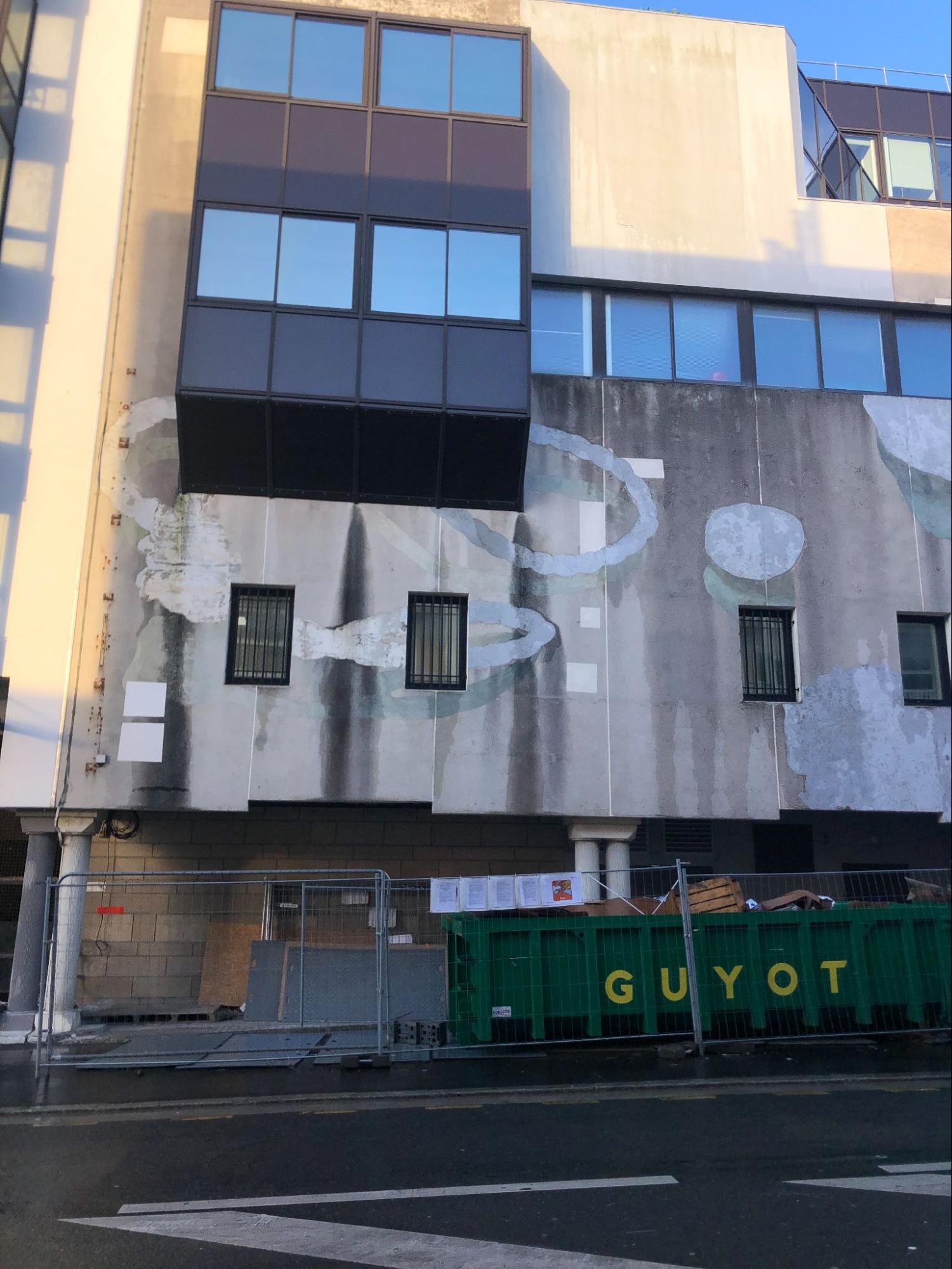
Images of buildings in Brest’s city center, 2023. Photos by Jane Freiman.
When I first learned that I would be teaching in Brittany, I worried about being able to find an artistic community and connection there. Art-wise, I was only aware of a small group of 19th-century painters from Paris who had visited the countryside to paint the “quaint and backwards lifestyle” of the Breton people, who maintained their own languages and Celtic traditions. With the guidance of post-Impressionist painter Paul Gaugin, the Pont-Aven School crafted a narrative of the region alongside a distinct image. Until my frantic post-departure searches, I hadn’t even been aware that Pont-Aven was in Brittany. And I knew nothing about the region’s contemporary art. So, I was surprised to find that, today, Brest is the site of a burgeoning art scene. It is a town teeming with art students, artist-run collectives, and nonprofit arts organizations. It is home to one branch of France’s largest art school, the The École Européenne Supérieure d’Art de Bretagne. Two organizations in particular—one, a digital archive of local artists and the other a nationally-recognized art center—seek to support and document a range of creative practices in the region, bridging local and global interests, as well as physical and digital space.
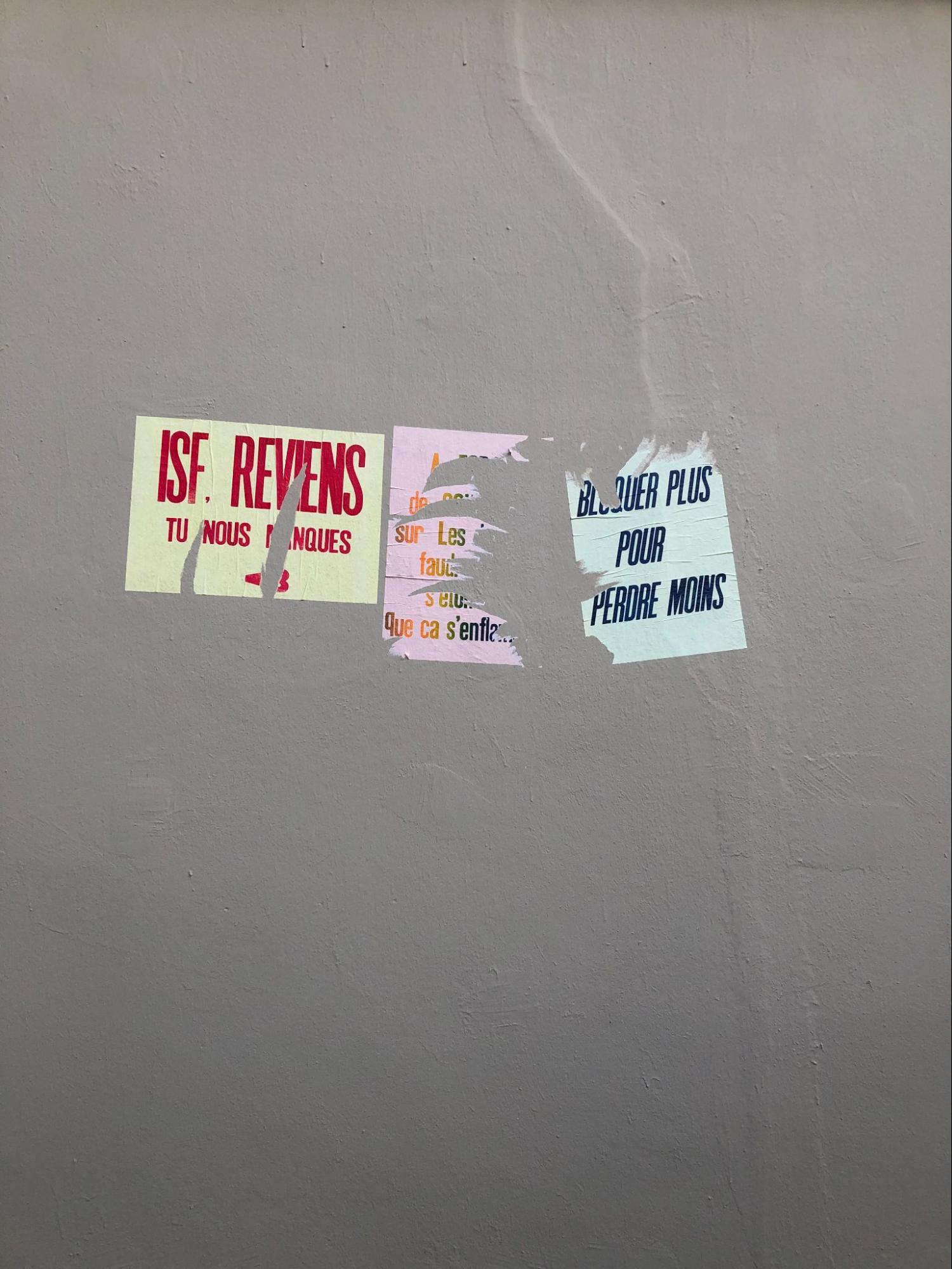
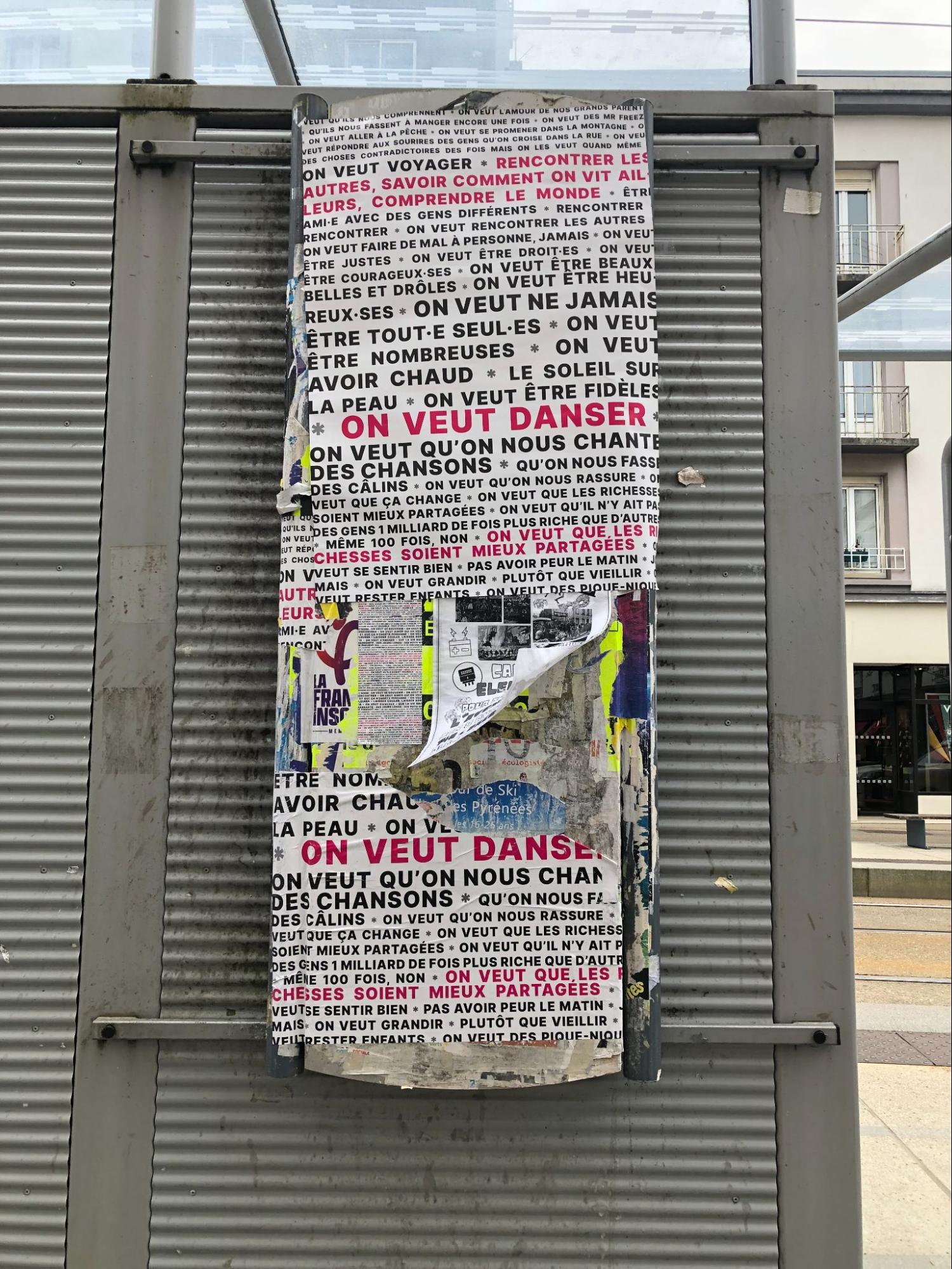
Protest posters hung in Brest’s city center. Photos by Jane Freiman.
On my first walks through Brest, I began to notice the profusion of posters, mini billboards, and signs scattered around the city. Brest is a heavily papered city, plastered in design-y, textual messages about politics or parties or conferences. It is a city fueled by modge podge, which affixes itself seamlessly to the smooth concrete surfaces of its buildings. One of these posters, fastened to a billboard in my neighborhood, was advertising a show by New York-based artist Rafael Domenech at the Passerelle Center for Contemporary Art. Eager to find contemporary art in Brest, I took the bus to the Saint Martin neighborhood.
There, I arrived at a large, two-story building that once housed a co-op called the “Alliance of Workers” (L’Alliance des Travailleurs) and a wholesale fruit and vegetable warehouse. Today it is shared by the Passerelle Center for Contemporary Art and Documents d’artistes Bretagne, two key actors in Brest’s art scene that collaborate on shows, residencies, and other projects geared towards helping both emerging and more experienced artists gain exposure in and beyond the region.
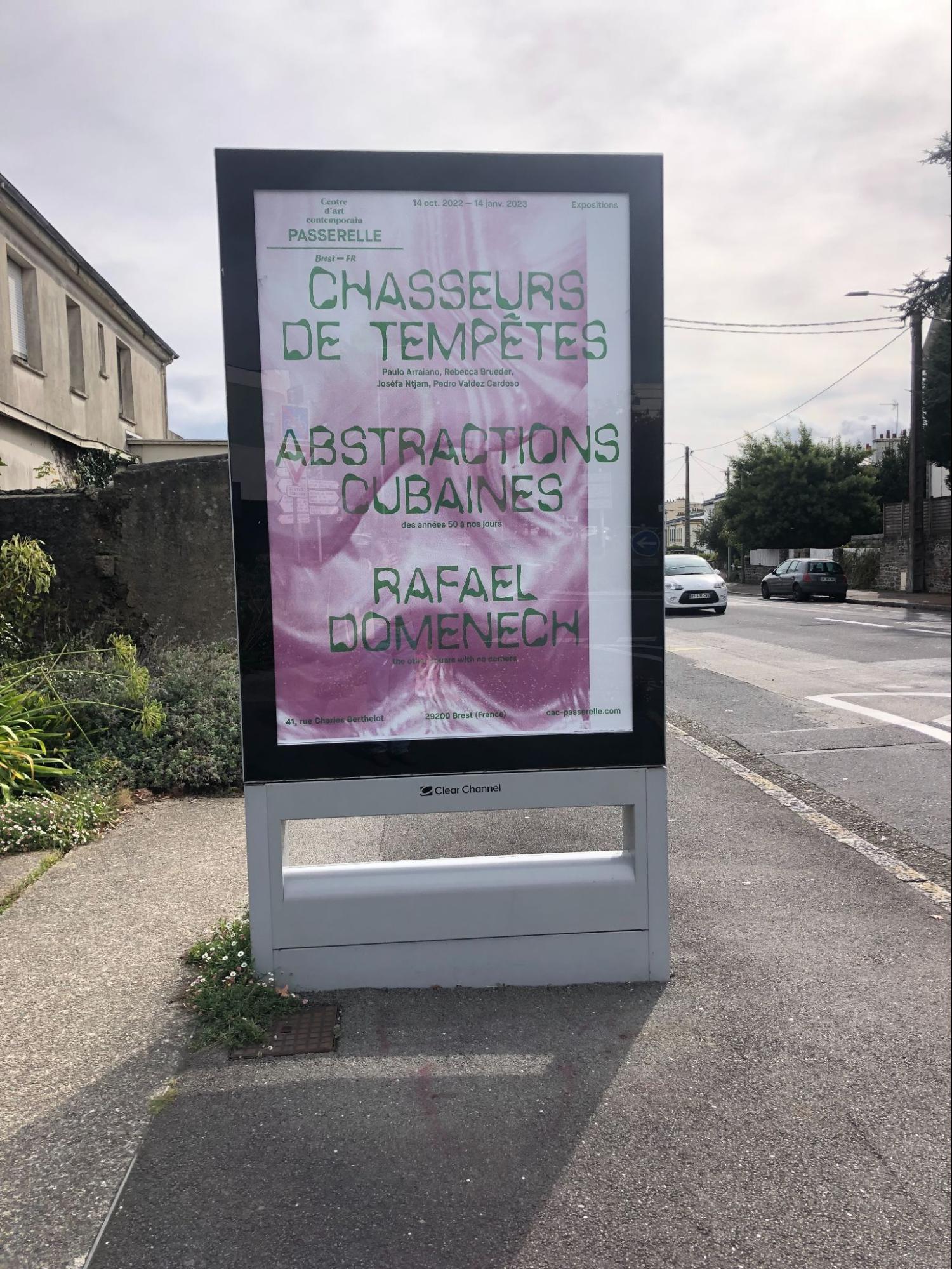 Poster advertising three shows at the Centre d’art Passerelle in Brest, France, October 2022. Photo by Jane Freiman.
Poster advertising three shows at the Centre d’art Passerelle in Brest, France, October 2022. Photo by Jane Freiman.I reached out to Domenech via email in July and we spoke over Zoom—I from a noisy coffee shop in Cambridge, and he in his house in upstate New York. Domenech cited the residual evidence of creative and political engagement—clearly seen in the graphics decorating facades throughout Brest—as inspiration for his show the other square with no corners (2022). Writing in the press release for the show, he mentions noticing a number of “stylised anti-fascist stickers, graphic slogans and posters that were sometimes militant and sometimes advertising various public events.”
Domenech had witnessed this signage during a visit to Brest in the months leading up to the show. While there, he attended a couple group shows at the Passerelle and was impressed to find that over 500 people showed up to celebrate and engage with the work. “It immediately shows you that there is a kind of care towards the arts and towards artistic productions,” Domenech said. It was clear that in Brest “people share, cherish and care for the place that, you know, they have no gain other than participating and having a good time,” he said.
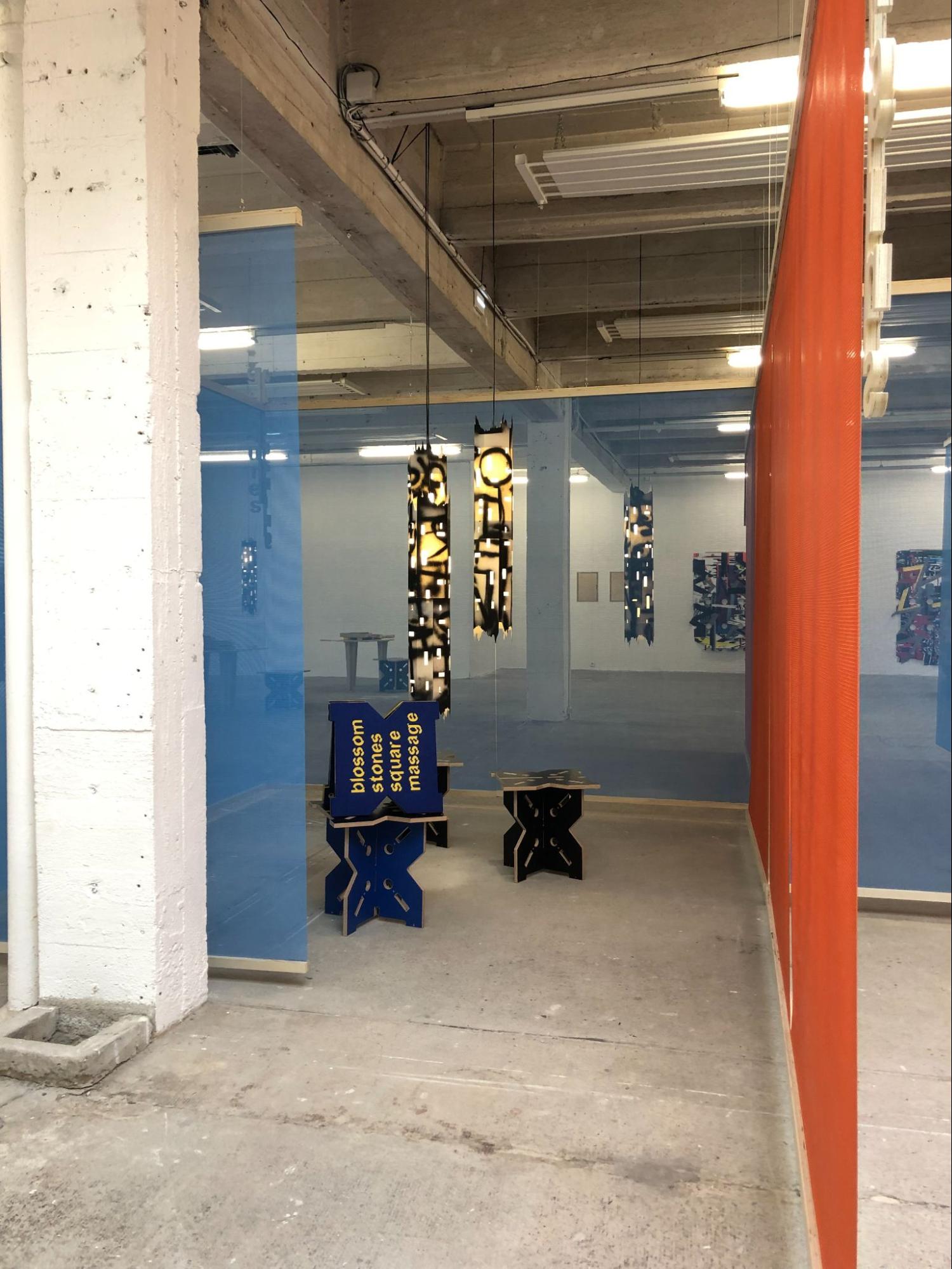

Installation view of Rafael Domenech, the other square with no corners, 2022, Centre d’art Passerelle, Brest, France. Photos by Jane Freiman.
Based on the culture of openness and community he observed, Domenech recalls deciding that Brest would be a generative place to experiment with collaboration and play with the form of the exhibition. For example, the artist and the director of the Passerelle, Loïc Le Gall, brought in a pair of Brest-based graphic designersrepresenting Atelier Téméraire, to create posters to be included in the other square with no corners. The posters were primarily hung on a 32-inch-wide column that was the same dimensions as what Domenech refers to as the “miniature billboards” that represented the “allocated space by the government” for advertising; the same size as the one that advertised the show and drew me to the Passerelle. The designers returned throughout the duration of the show to add to or alter the arrangement of the posters on the column without any oversight from Domenech or the Passerelle. One of these posters, pictured below, reads “Brittany is not a vacation home” [La Bretagne n’ext pas une residence secondaire], playing on common assumptions about Brittany that have persisted since the early depictions of the Pont-Aven School painters. In this way, the other square with no corners engages with Brest’s relationship to place and belonging on multiple levels, and through both its content and form.
 Atelier Téméraire, posters included in the other square with no corners, Rafael Domenech, 2023. Photo by Jane Freiman.
Atelier Téméraire, posters included in the other square with no corners, Rafael Domenech, 2023. Photo by Jane Freiman.
While at the Passerelle to see Domenech’s show, I happened to pick up a free promotional pamphlet for Documents d’artistes Bretagne, a digital archive of works by artists living and working in the Brittany region. I was immediately drawn in by its description of DDAB’s work in the region. Though I didn’t realize it, the office of DDAB was situated right behind me, tucked away within the cavernous, white-walled building of the Passerelle.
Seeking ways to become more involved in archives work and in Brest’s local art scene, I sent an email to the address listed on the pamphlet and met with the creative director, Christine Finizio. We worked out a kind of informal volunteer arrangement for a couple of hours each week. During the following few months, I translated parts of their website to English, wrote a short text for their recurring series of “parcours thématiques” (thematic groupings of works in the collection), and sat in on a range of meetings and workshops with featured artists, educators, and art students.
Finizio and Marceline Matheron conceived of Documents d’artistes in the late nineties, alongside “the development of access to digital technologies (scanner, inkjet printer, and internet),” […avec le développement de l’accès aux technologies numériques (scanner, imprimante inkjet et internet] Christine shared with me via email in August 2023. The availability of at-home scanning and printing technologies made the process of sharing artists’ work less cumbersome and less expensive. “At the time,” Finizio said, “archives of artists were entirely physical (photo prints, catalogs, press releases)” [À l’époque, les archives d’artistes étaient totalement matérielles (tirages photos, catalogues, articles de presse…)]. She recalls that the Centre Pompidou was the only art institution with a website when Documents d’artistes was founded, and everything else pertaining to artists’ documents was limited to paper materials and physical institutions. But Finizio and Matheron envisioned a collection that would be able to circulate much more widely and reach diverse publics within and outside of the region. Although they originally maintained more traditional physical archives, they found that this format didn’t serve their primary goal: to increase the visibility of artists in the region.
À l’époque, les archives d’artistes étaient totalement matérielles (tirages photos, catalogues, articles de presse…)
In 1999 they founded the first local chapter of Documents d’artistes in the Provence-Alpes-Côte d’Azur region of the south of France. When Finizio moved back to Brittany in 2009, she established Documents d’artistes Bretagne with the same intentions. Through its online collections of works by local artists, DDAB works “to make visible the dynamic of a regional art scene,” [rendre visible la dynamique d’une scène régionale] Finizio said.
Then, in 2013, Finizio helped to officially create the Résau Documents d’artistes (DDA), which serves as a parent organization to the individual chapters. DDA develops its own programming, as well as links and facilitates collaboration between the member DDA associations. The Réseau now includes chapter organizations in seven different regions underrepresented in France and Western Europe’s art scene: Provence-Alpes-Cote d’Azur, Brittany, Auvergne-Rhone-Alpes, Nouvelle Aquitaine, Reunion, Occitania, and Geneva. Each organization collects and shares information about artists who live and work in the region. Thus, although they live only on the internet, their collections and programming are distinctly emplaced.
The philosophy behind this regionally-focused model has to do with counteracting the overwhelming concentration of visibility and resources given to Paris when it comes to contemporary art in France. When I spoke with Loïc Le Gall, the director of the Passerelle, on the phone recently, he noted this widely-held assumption: “In France,” Le Gall said, “when you are talking about art, you are talking about Paris.” But this is in the process of changing. “Not all artists in France live in Paris!” [Tous les artistes en France ne vivent pas à Paris !] Finizio said in our email exchange. The primary purpose of Documents d’artistes is to counteract the idea that Paris is the center and origin of contemporary art production in France. In order to achieve these aims, instead of maintaining regionally-located physical collections, they utilize digital technologies that allow artists to share their work far beyond the coasts of Brittany. The move towards decentralization in the French contemporary art world that DDAB exemplifies is symptomatic of a series of national changes in policy and funding structures, as well as deeply rooted ideas of regionality and relationships to place.
Beginning in the 1980s, then-President François Mitterand led a series of initiatives to revitalize the art world in regions outside of Paris. Le Gall marks Mitterand’s election as the “turning point” for the contemporary art world in France. One major development was the creation of official “art centers” (Centres d’art contemporain) in every region of France. Le Gall describes art centers as “a museum without a collection” and a space where curators and artists work to produce temporary exhibitions. While DDAB is a collection without a museum, Passerelle is a museum without a collection.
I was curious about DDAB immediately, first for its unusual form—as a regionally focused, publicly-funded digital archive—but also for the idiosyncratic dynamics of the particular scene it seeks to document and share. The DDAB staff works closely with artists to develop and publish their portfolios, which generally follow the same three-part structure: images and short descriptions of key artworks and exhibitions; a page for a biography, references, influences, critical texts written about the artist, interviews, and other media surrounding the work; and a comprehensive CV of the artist. DDA Bretagne selects about ten new artists each year to gather and arrange materials for their online profiles. From there, the DDAB team regularly meets with the artists to collaborate on producing the digital documentation of their work.
A recently published profile features Brittany-based and American-born artist Hilary Galbreaith, who I met in December during a meeting to discuss the creation of Galbreaith’s page. We gathered around the large rectangular table in DDAB’s small cubical room within the Passerelle. Galbreaith had traveled from a nearby city, Rennes, to meet with Finizio and the rest of the DDAB staff. For the most part, I sat quietly to the side and chimed in occasionally with my slightly jumbled French. Galbreaith, who attended art school in France and teaches at the regional art school, the École Supérieur Supérieure d’Art de Bretagne (EESAB), occasionally humored me with a few phrases or translations in English. I watched as Finizio and Galbreaith debated over how to present and arrange the images, down to the details of how a user might click through a carousel of images.
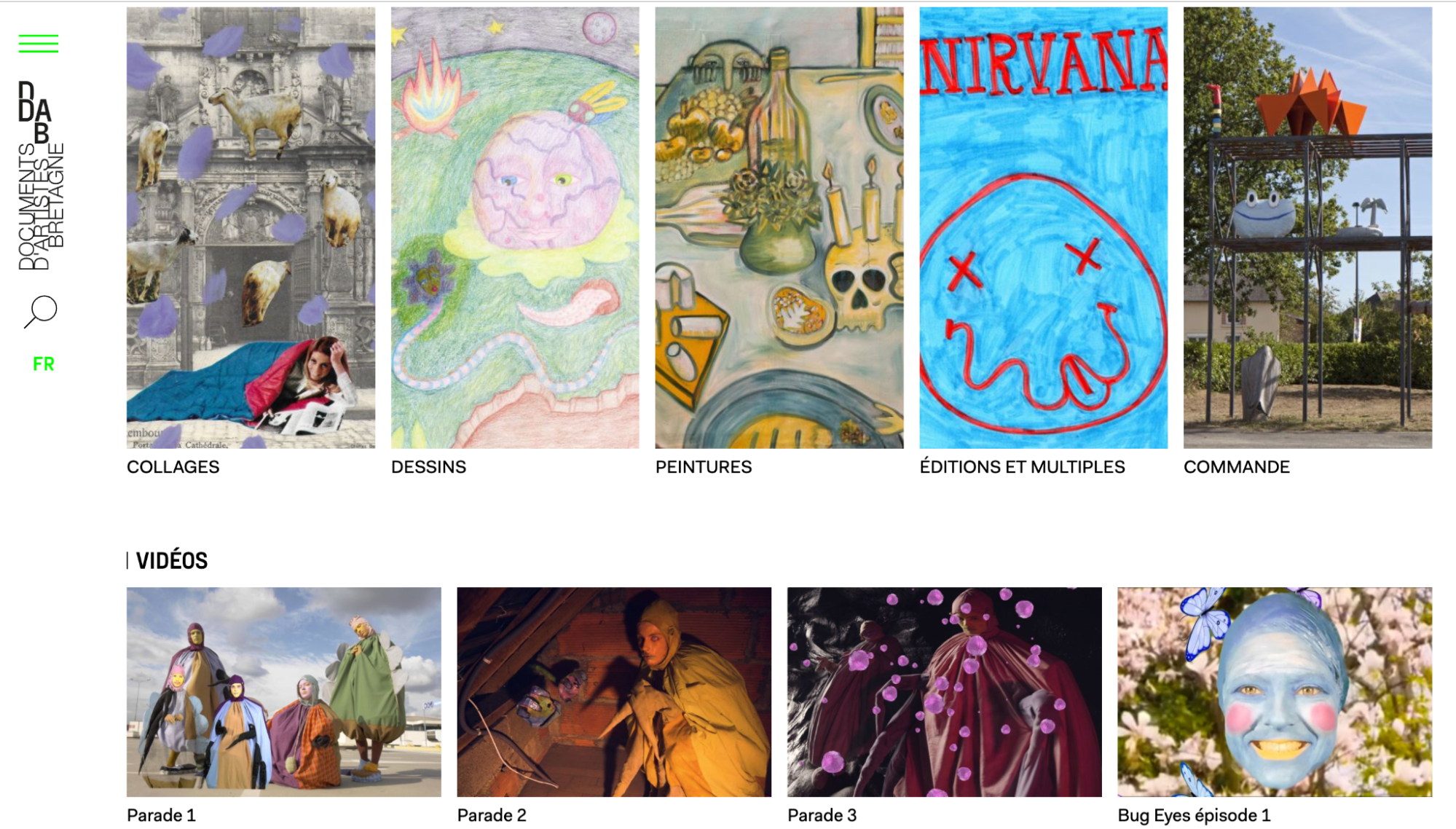
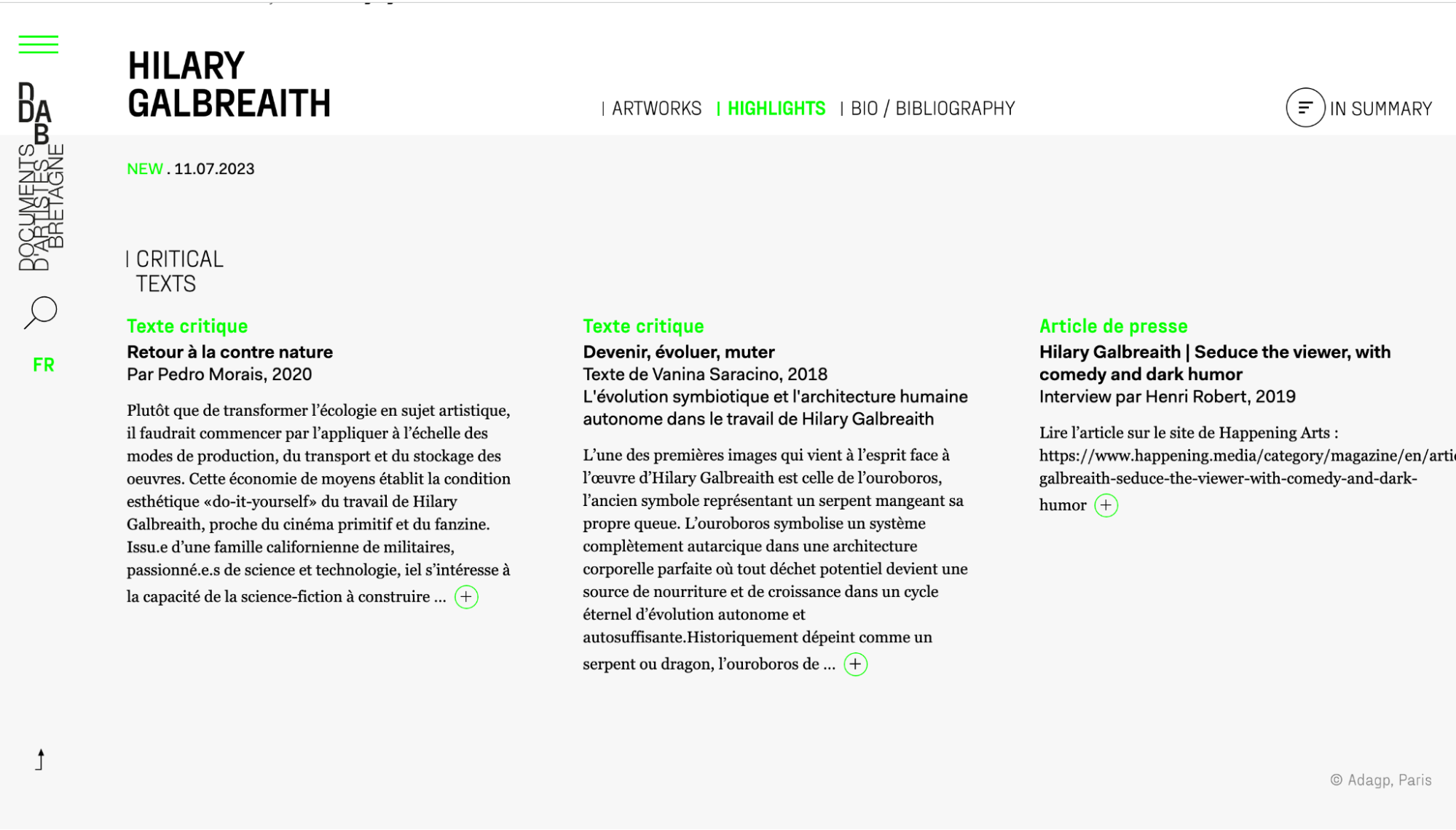
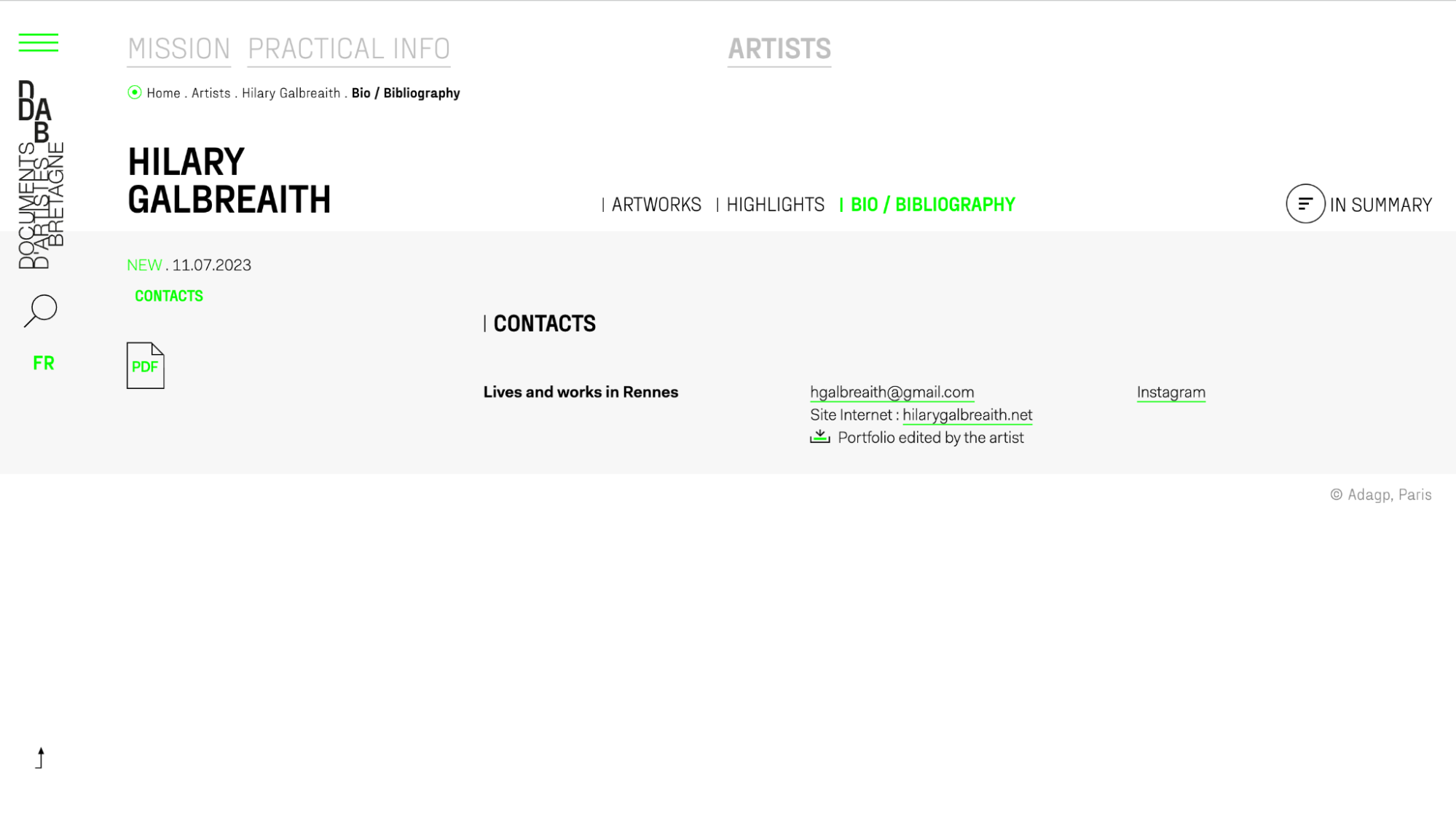
Screen grabs of Hilary Galbreaith’s dossier on the Documents d’artistes Bretagne website. Courtesy of Hilary Galbreaith and Documents d’artistes Bretagne.
Earlier this month, I spoke with Galbreaith on Zoom while they were attending a residency in Normandy. For Galbreaith, DDAB’s value lies in its ability to “cut to the heart of the work and how that develops over the years.” Galbreaith refers to the extensive and never-ending work of documenting, narrativizing, and promoting as the “invisible labor” of artists. Particularly in an age of constant online self-promotion, explaining and packaging one’s artwork amidst a constant stream of images can be a daunting task. In Galbreaith’s experience, working with DDAB helped “take some of the load off,” they said. They even are counting on the DDAB profile as a replacement for their website because it more effectively represents their work.
In the context of a relatively small and underrepresented art scene, like Brest’s, online visibility becomes essential to an artist’s success. Galbreaith describes Brittany’s scene as being, at times, a “closed circuit.” It is intimate and relatively “small and closed.” The “closed circuit” of Brest’s art scene results in a strong sense of relationality, collaboration, and support amongst artists in the region. “People will get in the car,” Galbreaith added, “and they'll carpool and they'll drive for three hours to go to an opening of a show. There's just kind of solidarity.”
At the same time, this can pose challenges for artists seeking to move beyond local recognition. “You can be shown in Brittany a lot, but not really ‘make it’ other places,” Galbreaith said. Thus, DDAB, which circulates its collections widely, becomes an invaluable tool for the included artists.
And, for a variety of reasons, building a career that is recognized both within and outside of the Brittany region is becoming increasingly possible, according to Le Gall. He chalks this up to shifts that have taken place in the wake of the COVID-19 pandemic, including a piece of new legislation, the Active Solidarity Income/Revenu de solidarité active (RSA), which grants unemployed people an amount of money that, in his account, would be difficult to live on in Paris, but feasible in Brittany. As a result, more artists are moving to Brittany and artists who went to school there are staying longer, whereas before they might have left post-graduation in search of galleries and art centers with bigger names and bigger audiences.
The last time I visited the offices of DDAB and the Passerelle was a few weeks before I returned to the US. It was the first stop on a day my friend Margaux and I later deemed the most Brest day (the Brest day ever). At the Passerelle, part of Domenech’s installation was still up: a set of wooden stairs laden with several small wooden boards spray painted with capital letters of the alphabet. The wall text invited visitors to move and rearrange the letters. Margaux and I wrote each other messages with the letters propped on the stairs. Afterwards, we stopped into an antique store that looked like one of those memes where everything resembles real objects but nothing coheres into a recognizable thing; went to the bar inside which two large dogs and one large pig live (and where the owner was also selling her collection of early 2000s miniskirts for 1 to 2 euros a piece); got caught in a torrential downpour (one of several that day alone); and ran for cover onto the tram, which was naturally found to be indefinitely delayed as a result of protests in Place de la Liberté.
When I think of this day, I think about the particularities of place that can only be conveyed through actually being somewhere, through the sensorial experience of walking through streets, of getting rained on, of being present in crowded rooms and at parties and amidst intimate conversations.
While discussing the circulation of images of art online, Galbreaith told me, “A physical artwork is so much more than the image. There's always going to be a part of it that resists the image and you can't understand without being there,” they added. In many ways, the character of Brest and its art scene resists both the image and the word. It is a feeling, a mood, an amalgamation of encounters with people, street corners, art, small round parks, stone cliffs, and concrete façades plastered with posters. While the work of DDAB may be to render the regional scene visible to a geographically-diverse audience, something will always necessarily be ungraspable.
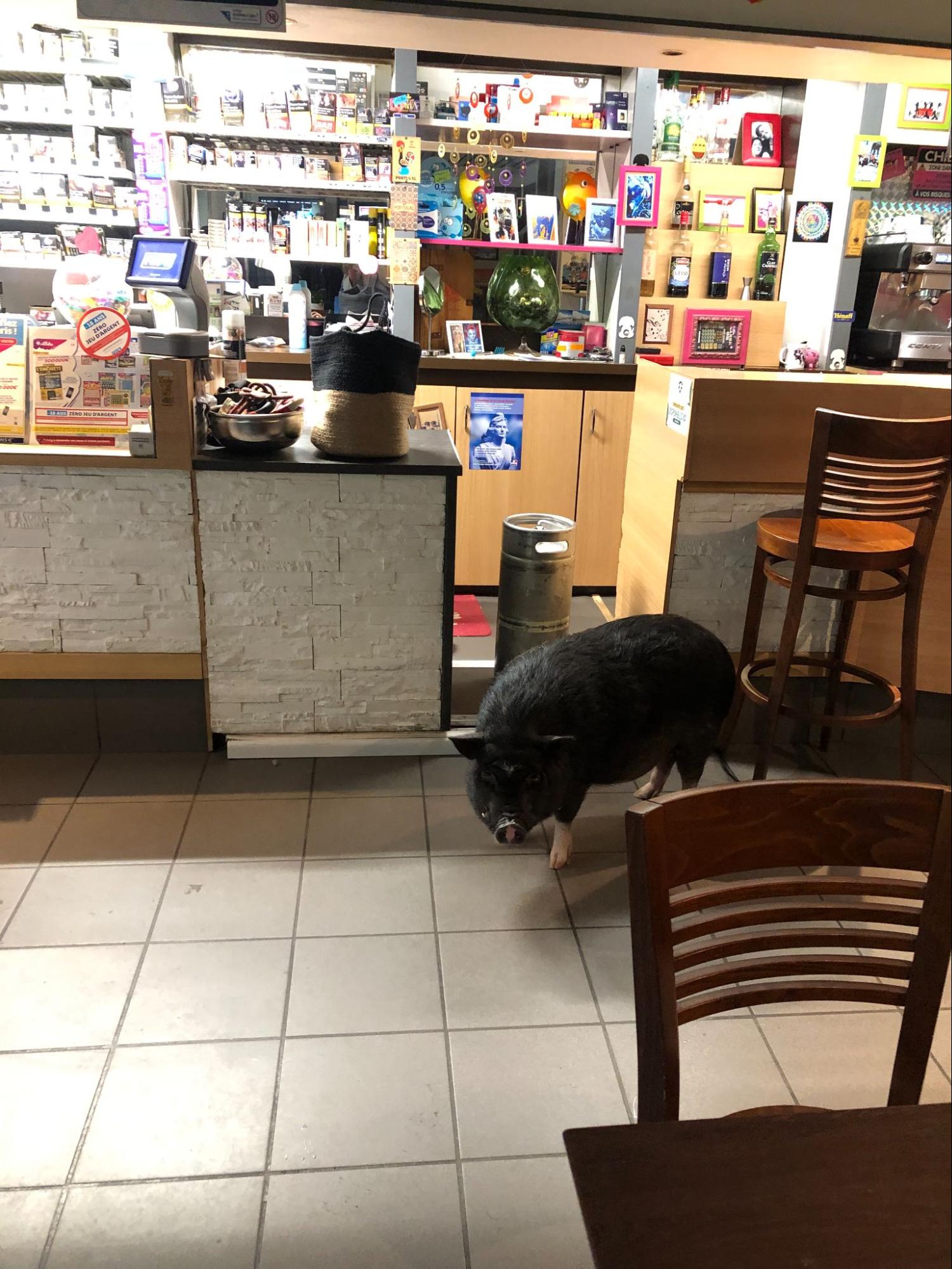
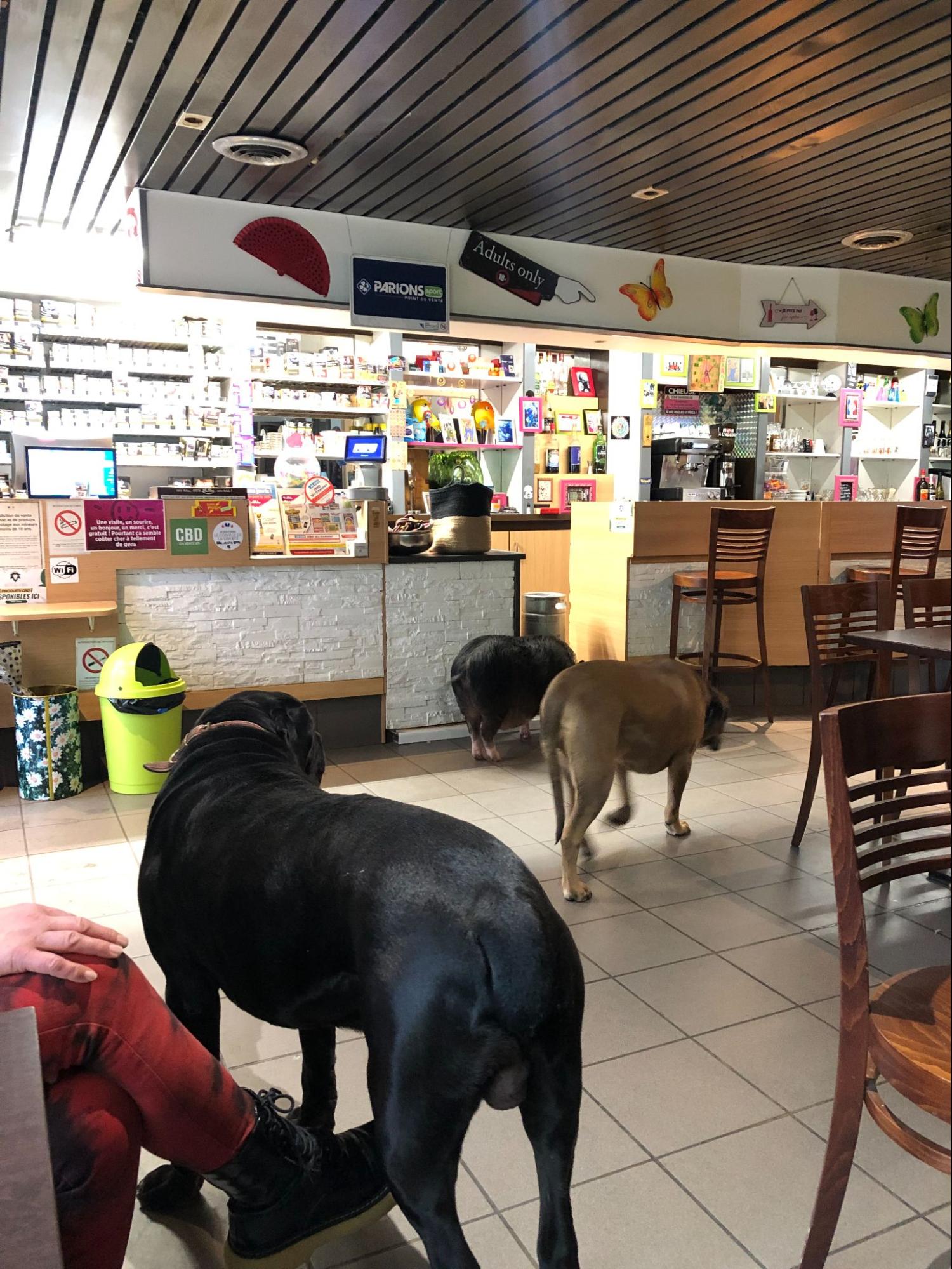
Couscous the pig at Brest Mêm, 33 Rue Saint-Marc
( Back to top )